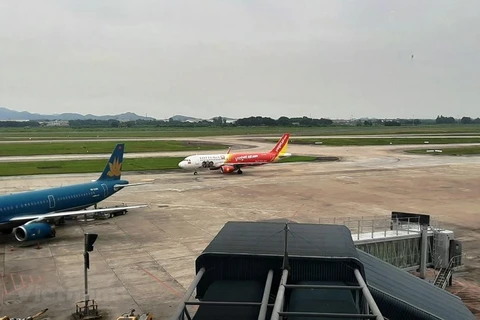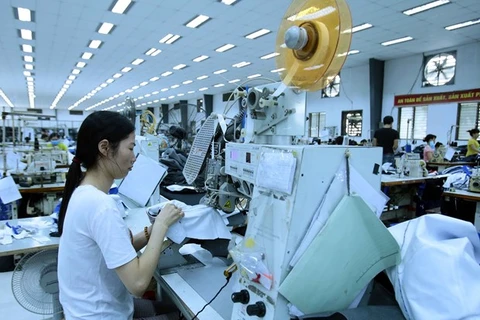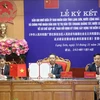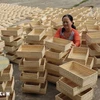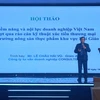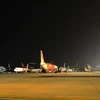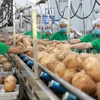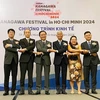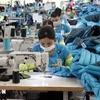
Hanoi (VNA) - As COVID-19 control and prevention ramps up, a report from the General Department of Vietnam Customs (Vietnam Customs) showed that import-export value reached 37.1 billion USD in February - 0.5 percent higher than January.
According to the report, the export value was 18.6 billion USD, 1.5 percent higher than the previous month and 34 percent higher than the same period last year. Meanwhile, the import value stood at 18.5 billion USD, dipping 0.5 percent from January, but increasing 26 percent year-on-year.
In February, two key currency earners – crude oil and ore – saw a reduction in value compared to January. Vietnam shipped 467,000 tonnes of crude oil overseas, up 13.3 percent in quantity. The country’s ore export volume was measured at 250,000 tonnes.
Vietnam spent 345 million USD importing 650,000 tonnes of petrol and oil products, representing monthly decreases of 14.1 percent in quantity and 27.2 percent in value.
The import value of computers, electronic devices and components was 4.4 billion USD, while that of automobiles rose to 134 million USD, representing month-on-month increases of 4 percent and 21 percent respectively.
According to a representative from Vietnam Customs, implementing the Ministry of Finance’s Directive 01/CT-BTC issued on January 31, the general department established a working group to support import-export activities and COVID-19 prevention and control work. The group is in charge of providing and exchanging related information.
Vietnam Customs has undertaken the task of collaborating with other units to gather data on imports and exports nationwide, particularly the trading of goods with China, the export of face masks to China, and the volume of goods stuck at border gates.
After summing up difficulties reported by customs offices in different localities, the general department has worked with relevant ministries and sectors to clear barriers to import-export activities, particularly those involving markets hit by COVID-19. It also updated data to reports to leaders of the government and ministries, serving the management of COVID-19 prevention and control.
Regarding customs clearance, the Quang Ninh customs department temporarily halted the operation of the Ka Long and Bac Phong Sinh border gates, the Po Hen crossing point, border mark Km 3+4, locations for exports in Dai Vai, Luc Chan, Luc Lam, border mark Km 1342+300, border mark Km 1306, and Dong Van. The movement of people through Van Gia port border gate was also suspended.
Under the Prime Minister’s instruction in Dispatch 224/CD-TTg, dated February 12, Mong Cai city People’s Committee is working on a plan to resume import-export activities at border mark Km 3+4, while ensuring strict epidemic prevention for drivers of transport vehicles.
Authorities of Dongxing city in China’s Guangxi province have set up checkpoints along the roads leading to the city to stop vehicles carrying passengers in or out of the city.
In the northern mountainous province of Lang Son, the local customs department agreed with competent Chinese agencies to maintain the flow of border goods and ensure disease prevention and control work. Accordingly, enterprises need to arrange separate quarantine sites for Chinese and Vietnamese people involved in border transaction activities, while listing information of automobile drivers and manual workers at the border gate to support the management work of competent agencies.
Authorities of China’s Yunan province and Vietnam’s northern mountainous province of Lao Cai have agreed to establish medical quarantine sites and a transport team fully equipped with protective gear against COVID-19. Members of the transport team will undergo careful health screenings and be trained on preventive measures in line with guidance from the Ministry of Health.
In support of the customs sector, medical units across localities have worked closely with customs personnel and border guards in entry and exit monitoring and border quarantine work to promptly detect suspicious cases and infections and curb the spread of the virus./.

